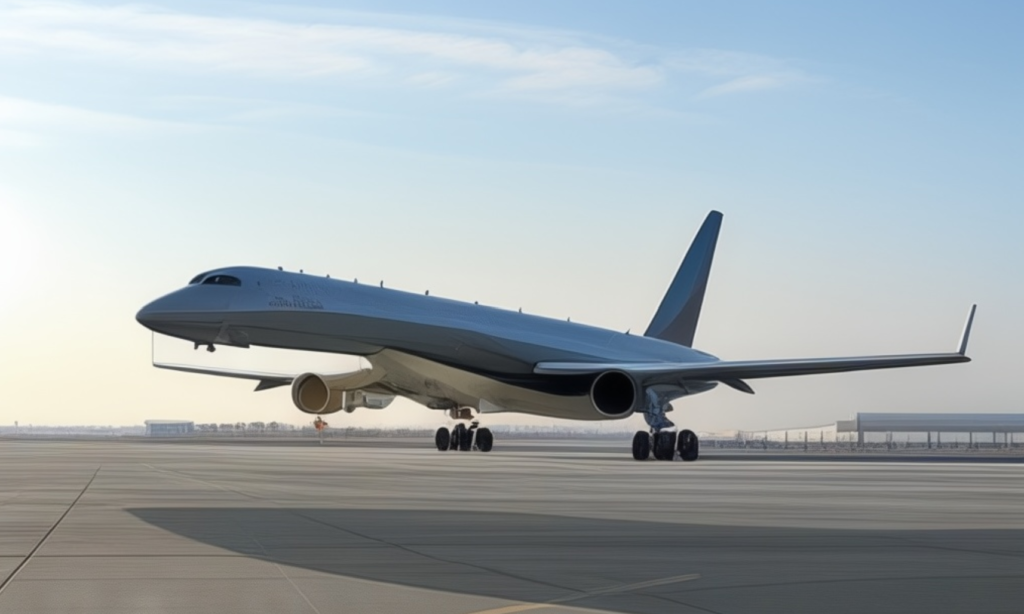The selection of materials for aircraft structures is a critical process that involves considering various factors to ensure optimal performance, safety, and efficiency.
How to Select Aircraft Structure Materials?
The selection of structural materials for aircraft is a complex process that involves weighing multiple factors to ensure optimal performance, safety, and cost-effectiveness. Among the most critical considerations are strength, lightness, stiffness, toughness, resistance to corrosion and fatigue, ease of fabrication, availability, and cost.

Selection of Aircraft Structure Materials
Let’s explain deeper into some of these key properties:
1. Strength and Lightness:
Strength refers to the ability of a material to withstand applied stresses without failure, whether those stresses are tensile (pulling apart), compressive (squeezing), or shear (sliding). Lightness is essential in aircraft design to minimize weight, enhance fuel efficiency, and increase payload capacity. Therefore, materials with high strength-to-weight ratios, such as advanced composites and lightweight alloys like titanium and aluminum, are preferred.
2. Stiffness:
Stiffness is the resistance of a material to deformation when subjected to an applied force. In aircraft structures, stiffness helps maintain shape and stability, especially under aerodynamic loads. Materials with high stiffness, such as carbon fiber composites, are used in critical components to ensure structural integrity and performance.
3. Toughness:
Toughness is the ability of a material to absorb energy and plastically deform without fracturing. It requires a balance of strength and ductility. Tough materials can withstand impact and shock loads without failure, contributing to the overall durability and safety of aircraft structures. Toughness is particularly important in components subjected to high-stress conditions, such as landing gear and fuselage sections.
3. Ductility:
Ductility refers to a material’s ability to deform under tensile stress, withstanding large strains before fracture occurs. Ductile materials can undergo significant plastic deformation before failure, providing warning signs of impending structural failure. This property is crucial in materials used for forming and shaping structural components, allowing for flexibility and resilience during manufacturing and operation.
4. Brittleness:
Brittleness is the opposite of ductility and refers to a material’s tendency to fracture without significant deformation when subjected to stress. Brittle materials exhibit little to no warning signs before failure and may fail suddenly, posing safety risks in critical aircraft components. Materials with high toughness and ductility are preferred over brittle materials to ensure structural reliability and safety.
5. Elasticity:
Elasticity is the ability of a material to return to its original shape after deformation when the applied load is removed. Within the elastic zone, stress and strain are linearly related by Hooke’s Law, indicating reversible deformation. Elastic materials can withstand temporary loads without permanent deformation, contributing to the resilience and performance of aircraft structures.
6. Plasticity:
Plasticity refers to a material’s ability to undergo permanent deformation beyond its elastic limit. Plastic deformation occurs when stress exceeds the material’s yield strength, causing irreversible changes in shape. Ductile materials exhibit plastic behavior and can undergo significant deformation before failure, making them suitable for applications where flexibility and resilience are required.
7. Fatigue Resistance:
Fatigue resistance is the ability of a material to withstand repeated cyclic loading without failure. Aircraft structures are subjected to millions of loading cycles during their operational lifespan, leading to fatigue-induced failure if not properly designed and manufactured. Materials with high fatigue resistance, such as high-strength alloys and composites, are essential to ensure the long-term reliability and safety of aircraft structures.
8. Corrosion Resistance:
Corrosion is the gradual degradation of materials due to chemical reactions with the environment, particularly in harsh conditions like saltwater exposure and acidic environments. Corrosion resistance is critical in aircraft materials to prevent structural degradation and maintain performance over time. Various corrosion-resistant coatings and treatments, such as anodizing and cladding, are applied to aircraft components to enhance durability and longevity.
By carefully considering these factors, aerospace engineers can select materials that meet the demanding requirements of aircraft structures, ensuring optimal performance, safety, and reliability throughout the aircraft’s operational lifespan.